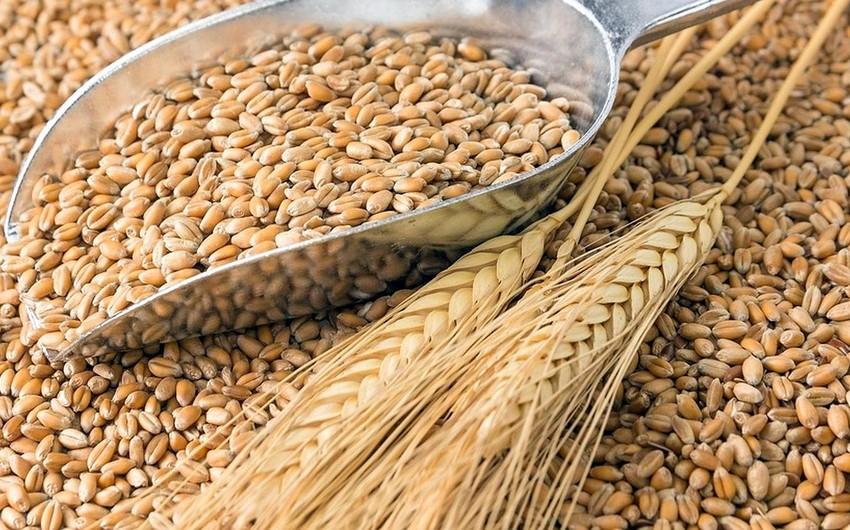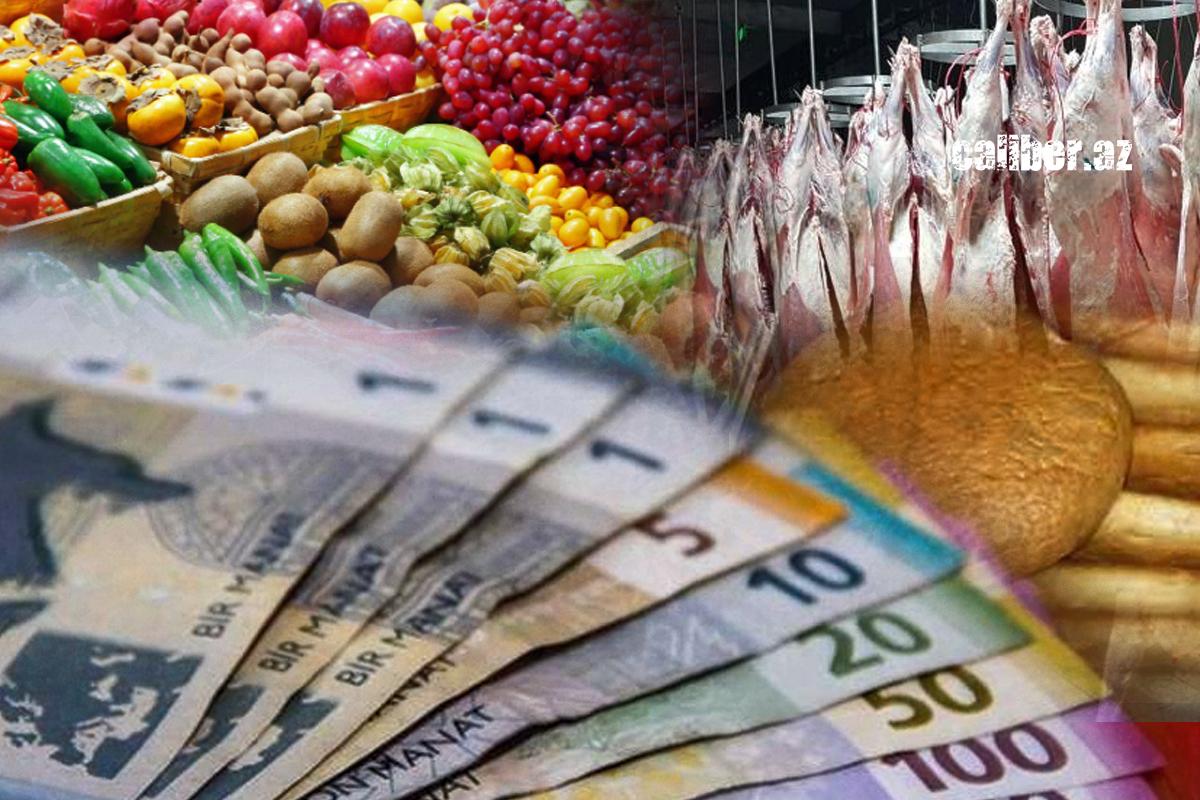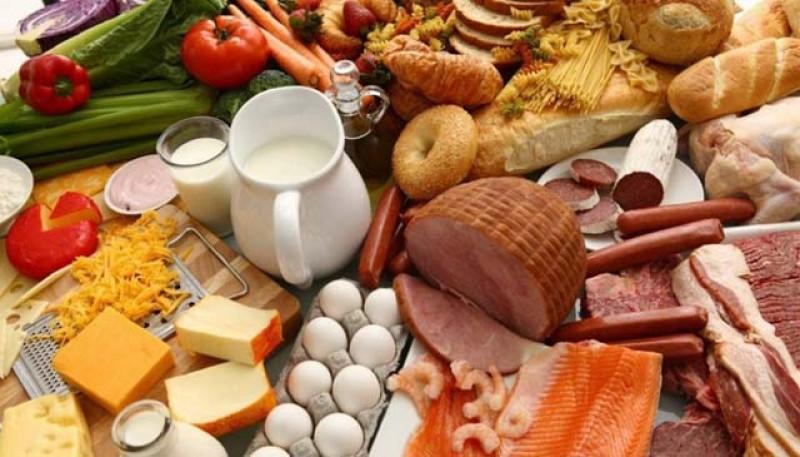Azerbaijan: Stake on self-sufficiency Khazar Akhundov's review on food security
The food crisis, ongoing for the second year, has visibly intensified with the outbreak of the war in Ukraine and the sanctions confrontation between the EU and the US and Russia. Blockade of ports on the Azov and Black seas prevents the export of Ukrainian agricultural products, mainly grains and oilseeds, while restrictions on the export of fertilizers from Russia also affect the growth of prices in the global food market. In general, the food shortage spins the inflation flywheel in Eastern Europe and CIS countries, and the threat of famine has increased in Africa and the Middle East. Moreover, the experts of the UN Food and Agriculture Organization (FAO) believe that the negative processes will increase in 2023, which threatens the growth of the number of hungry people by many millions.
According to the FAO estimates, the systemic problems of world agriculture, negative climate change, as well as the pandemic crisis, which led to a breakdown of established logistics and higher transport costs, resulted in an unprecedented rise in food prices. The exchange value of agricultural raw materials and food products in 2021 reached the highest level in 10 years, and the FAO food price index at the end of last year was 125.7 points, which was 28.1% higher than in 2020.
The greatest damage from food inflation suffered the third world countries, however, since last autumn the negative processes were observed in relatively prosperous Eastern Europe and post-Soviet states. And with the beginning of the war in Ukraine and anti-Russian sanctions, limitation of deliveries of wheat, and oil crops through the ports of Azov and Black seas, the introduction of quotas and barrier customs duties on export of grain, oil crops and some other basic crops in Russia and Kazakhstan, the situation on the food market of CIS, Middle East and North Africa became even worse. In particular, in May 2022 the food price index FAO amounted to 157.4 points, which is 22.8% higher than in May of the last year.
Particularly high dynamics are demonstrated by the FAO grain price index: it has been growing for four months in a row and in May it increased by 56.2% year-on-year. UN experts believe that the steady rise in wheat prices was due to the export bans (in addition to Russia and Kazakhstan), announced by India (the world's second-largest grain producer) amid concerns about the state of the harvest in several leading exporting countries, as well as reduced production prospects in Ukraine because of military operations.

But unlike India, which largely produced wheat for the domestic market, Ukraine until recently was the world's fifth-largest wheat exporter, fourth-largest corn exporter, produced one in two tons of sunflower oil and cumulatively supplied more than 400 million people worldwide with its food. However, for more than three months agricultural raw materials and foodstuff produced in Ukraine cannot be sent to buyers due to the blockade of Ukrainian ports by the Russian Navy, while overland railroad routes have low capacity and are at risk of air and missile strikes. "Six million tons of grain and nearly 14 million tons of corn are blocked at Ukrainian ports, and if these cargoes are not unblocked, threats to food security will only grow," warned Maurizio Martina, FAO vice director and former Italian agriculture minister.
Directly or indirectly, some 1.7 billion people, more than a fifth of the world's population, will feel the effects of Russia's full-scale invasion of Ukraine, the UN said recently. Today, 49 million people in 43 nations around the world face starvation, and according to UNICEF, child mortality rates in several countries are already up 40 per cent from 2016 due to severe food shortages.
"Russia's war against Ukraine could already lead to a full-blown global food crisis in a matter of months, leading to poverty, destitution and hunger in the world's poorest countries, a negativity that could last for years if Ukraine's agricultural exports are not restored to prewar levels as soon as possible," UN Secretary-General António Guterres recently noted.
Alas, it appears that the conflict in Ukraine is taking a long time, and the consequences of this crisis - the lack of agricultural raw materials and their rising prices will be felt in 2023. This opinion, in particular, is held by the leading FAO economist Maximo Torero. In a recent interview with La Stampa newspaper, he noted that the lack of access to cheap forage will increase the cost of production at poultry farms, meat and dairy products will become more expensive and other related industries will suffer.
According to the expert, another serious threat to the future is the persistence of high fuel prices and restrictions on the export of fertilizers (Russia and Belarus are the world's leading producers). The population of poor African countries is the most vulnerable, but the problems of food production and lack of fertilizers will also affect Europe. "In Europe, countries such as Lithuania, Moldova, Serbia, Finland, and Estonia are almost 100% dependent on fertilizer supplies from Russia. Ireland, Norway, Poland, Macedonia, and Slovenia have a high dependence on Russian fertilizers," Torero said, emphasizing that if the key exporters fail to provide the required volume of fertilizers in the next two months, the world will face a sharp decline in crop yield in 2023.
Of course, efforts are being made around the world to minimize the damage from the food crisis, and recently the G7 economic ministers agreed to create an alliance for global food security. In particular, the World Bank agreed to allocate $30 billion to support agriculture in the poorest countries of Africa, the Middle East, and Central, and South Asia, to mitigate the consequences of rising food prices for socially vulnerable groups, as well as to support irrigation projects. In turn, the European Bank for Reconstruction and Development plans to allocate 500 million euros for food security and will provide funding for agricultural and food trade as part of the EU's two billion euro package for war-stricken Ukraine and its neighbouring countries. The FAO is also working to supply Africa with fertilizers by optimizing production and supplies.

A significant contribution to these efforts may be the scheme discussed by Ankara, Kyiv and Moscow for the passage of Ukrainian vessels with grain from Odessa: according to a confidential source of the newspaper Izvestia, dry cargo vessels with the grain will leave the port under the escort of Turkish ships in neutral waters of the Black Sea, to a specified coordinate. Then they will be escorted to the Bosporus by Russian warships to ensure their safe passage through the Black Sea. However, the day before Ukrainian Foreign Minister Dmytro Kuleba expressed mistrust to Russian statements "about securing the trade corridors and not using them to attack from the sea" and ruled out the possibility of clearing parts of the water area of Odessa and Mykolaiv. Nevertheless, it is expected that clarity on the prospects of creating a grain corridor will be introduced on June 8-9 during the visit of the heads of the Russian Foreign Ministry and Defence Ministry to Ankara.
Nevertheless, in order to create an alternative to the sea transhipment of grain and other Ukrainian agricultural products, the European Commission is considering the possibility of accelerating the process of organizing "solidarity corridors" to facilitate the export of food cargoes from Ukraine by various land routes, with further export through the ports of EU countries.
We can only hope that all the abovementioned financial and transport assistance of the UN and EU structures will really help to mitigate the current food crisis or at least reduce its negative consequences in the medium term.
However, the effect of unhurried steps of international structures is mostly designed for the long term. Respectively, the same post-Soviet countries and other states of the Black Sea and Mediterranean region have to overcome the consequences of the food crisis on their own. In particular, Azerbaijan, faced with the factor of imported food inflation, as well as its CIS neighbours are taking steps to protect the domestic market. Thus, since last year the republic extended the abolition of VAT and duties for importers of grain, and the export of strategically important food wheat is facilitated as much as possible.
The Agency of State Reserves was created in the republic, a structure of food reserves is being formed, and part of the food imported and produced in the country will be reserved in the warehouses of the agency in case of force majeure and in order to regulate prices in the domestic market. In March, the Cabinet of Ministers adopted a resolution "On measures to regulate the export from the territory of the country of some basic foodstuffs included in the minimum consumer basket and goods used in their production" to maintain the stability of the domestic food market. The document restricted the export of basic food products and raw materials, including flour and cereals, malt, starches, inulin, wheat gluten, oil seeds and fruits, some medicinal plants, forage grasses and forage grain.
However, given the global food crisis, it is difficult to count on a significant anti-inflationary effect only through the introduction of customs preferences and export quotas, etc. The government believes that the main mechanism of stabilization of the domestic market should be an increase in the production and processing of agricultural products with the application of modern agricultural technologies and processing. Azerbaijan's capacity for the production of nitrogen fertilizers can also be considered beneficial: SOCAR Carbamide Plant enterprise located in the Sumgayit Chemical Industrial Park (SCIP) fully meets the needs of the domestic market and has already repeatedly increased the export of scarce carbamide fertilizers.
Other critical factors for the agrarian breakthrough should be the development of the agricultural potential of the Karabakh and East Zangazur economic regions, the introduction of the most modern economical irrigation systems, as well as the complete digitalization of the sector. "We need to ensure the digitalization of the entire agricultural sector, as this will allow us to adapt this sector to the future transformation. Azerbaijan has come a long way in the field of digitalization of agriculture, and this work is carried out in all regions of the country, and today advanced IT technologies are also introduced in the liberated territories," said Azerbaijani Minister of Agriculture Inam Karimov, speaking at the international conference "Look into the Future: Transition to Digital Agriculture" recently organized in Baku together with FAO. According to the minister, the country achieved a 22.3% growth in agricultural production between 2015 and 2020, and these achievements were primarily based on digitalization and innovative approaches.
In particular, we are talking about the automated information system "Electronic Agriculture" (EKTIS) created by the Ministry of Agriculture. The electronic database of the system (BigData) provides a clear picture of the volume and structure of cultivated crops, and predictions for the harvest, allowing to inform farmers about the current supply and demand, helping to choose the most promising and profitable crops in a given season. The EKTIS mechanism has played an unprecedented role in bringing order to more than 450,000 farmers in the area of subsidies, increasing control and ensuring transparency in the process. The EKTIS information base is also based on the mechanism of concessional lending to farmers, as well as the system of agricultural insurance, the efficiency of which has noticeably increased over the past three years.

According to experts, in the medium term, Azerbaijan can satisfy more than 80% of its needs in food wheat from domestic resources, including through increasing the number of specialized agricultural grain parks with economical irrigation systems and sowing of elite high-yield wheat varieties. This is extremely important since today the country produces a little over 3 million tons of grain a year, most of it forage grain. And the domestic demand for food wheat is largely satisfied by imports: last year the country received about 1.1 million tons of wheat, over 90% of which came from Russia. Obviously, such dependence on imports in conditions of the volatility of the world grain market and intricate geopolitical collisions poses a threat to the country's food security.
Therefore, reliance on import substitution seems to be the only right decision. At the same time, grain production is planned to be established also on the fertile and abundant land of Karabakh and Eastern Zangazur, which has a total of 1 million hectares suitable for agricultural production, including 128 thousand hectares of irrigated land. In part, this work has already begun: this year the sowing work has been carried out in the territories of Fuzuli and Aghdam districts that were cleared of mines and now are sown with wheat and barley. In the near future, Azerbaijan plans to sharply increase grain production in the framework of a joint project with Israel, which provides our country with the latest agricultural technologies for the cultivation of wheat. And it is expected that significantly increased production volumes will ensure the supply of grain to the Israeli market by 2025.








